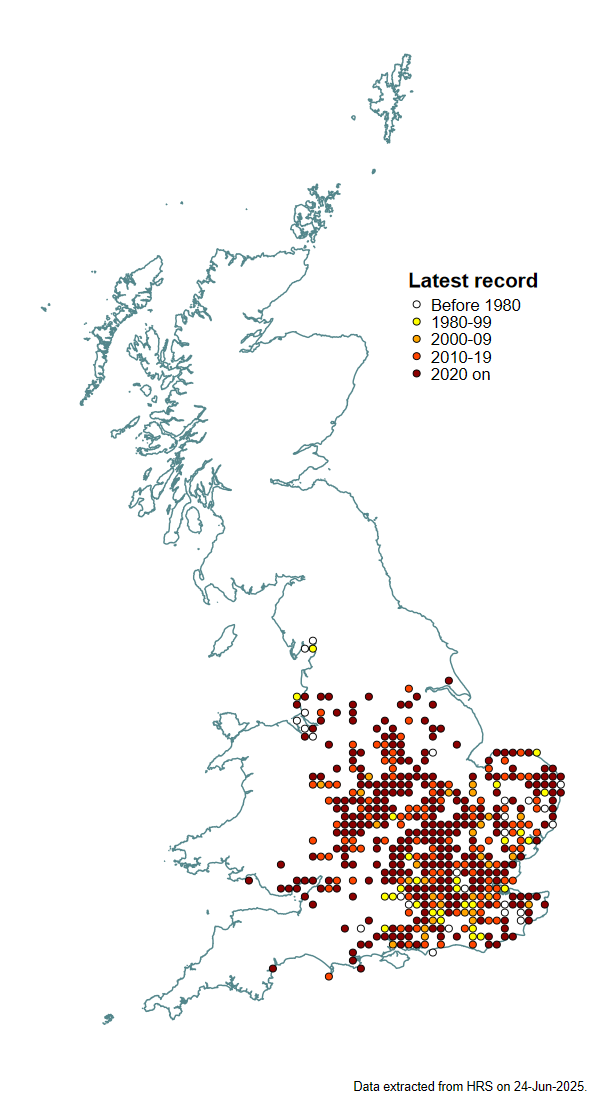Chrysotoxum verralli Collin, 1940
Identification
Identification difficulty = 3. ![]()
![]() according to Ball & Morris, 20241
according to Ball & Morris, 20241
Synonymy
Split from C. octomaculatum by Collin (1940)2. Early records of C. octomaculatum are likely to prove to be this species.
Biology
This species has been reared from larvae found in a nest of the black ant Lasius niger. Pupae have been found under a stone, and females seen ovipositing, close to the entrances of ant nests. It is found on well drained soils usually near the shelter of trees or hedgerows. Typical situations include grassy places in scrub, woodland rides and glades or on the fringes of heathland. They are often seen resting on vegetation, and occasionally visit flowers such as bramble Rubus sp. and Dog Rose Rosa canina.
Flight period
The following plots show the number of unique records per week excluding those reported to be of immature stages.

Distribution
This is primarily a southern and eastern species that occupies a climate envelope that is largely hot in the summer and cold and dry in the winter.

Trends
The following plots show the Frescalo TFactor vs year and a map of the rescaled frequency (all records) for the species.